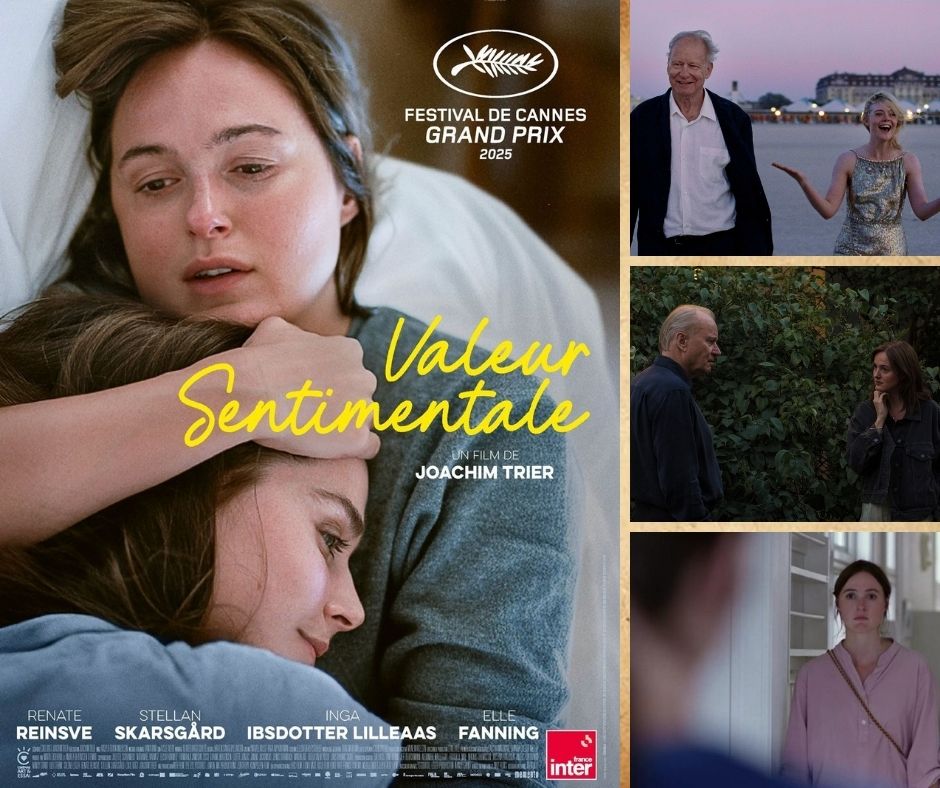Sentimental Value
Creating Art from Generational Pain

Following the breakout success of The Worst Person in the World, Joachim Trier returned to Cannes with Sentimental Value—the most anticipated film of the lineup. It was already being talked about as an awards frontrunner long before it premiered. And thankfully, Trier did not disappoint. This is his most mature, emotionally precise work yet: a powerful portrait of fractured families and the lasting scars left by parents on their children.
Like The Worst Person in the World, it all rings remarkably true. Trier creates layered, flawed human beings and explores their relationships with empathy—showing their failures without taking sides, revealing their contradictions without judgment. Sentimental Value joins the tradition of films like Fellini’s 8½ and Spielberg’s The Fabelmans: not strictly autobiographical, but personal enough to turn the camera inward and confront the cost of making art. Though filmmaking isn’t the core of the movie, it hums quietly in the background, as Trier shows how the creative process can consume an artist—and quietly unravel those around them. Drawing from his own experience of becoming a parent, Trier uses this story to ask: what’s the emotional cost of putting art before everything else—of creating something that may live on forever and move strangers deeply, even as the artist slowly loses themselves in the process?
He explores that through the fractured family of Nora (Renate Reinsve), a stage actress in Oslo and the daughter of legendary director Gustav Borg (Stellan Skarsgård). Hoping to mount one final project, Gustav reaches out with a script based on the life of his own mother—a member of the Norwegian Resistance who was tortured during WWII and later died by suicide in the family home. Nora refuses. He casts a Hollywood actress, Rachel Kemp (Elle Fanning), instead. And with that, old wounds resurface and the house fills up with everything they haven’t said to each other.
Though the film centers on the making of a film, Sentimental Value is never really about that. Trier uses the production as background noise; what he’s truly interested in are the relationships at stake: a father and daughter who can’t escape his shadow, two sisters sharing the same inherited pain, and long-time collaborators whose connection was built entirely around work. Whether quietly hostile or awkwardly affectionate, every interaction here feels lived-in, offering a richly textured study of people stuck in emotional cycles they don’t fully understand. The cast is uniformly excellent, and the performances hit with devastating precision.
Renate Reinsve may have less screen time than in The Worst Person in the World, but she creates an equally complex character. Nora is guarded, sharp, and quietly falling apart—still wounded by her father’s absence, and sinking deeper into depression. Reinsve conveys how the spark has left this woman’s life, and there’s a moment late in the film where she seems to accept there’s no real way out. She sells her character’s emotional death with a subtle glance, and it’s devastating. Elle Fanning, who’s been doing strong work since Super 8, finally lands a role that lets her show everything she’s capable of. Her character wants to make something meaningful, but she can’t quite access the emotional truth she’s meant to portray. That contrast with Nora—who understands the trauma but refuses to perform it—is one of the film’s smartest dynamics. Inga Ibsdotter Lilleaas brings quiet warmth to the role of the younger sister and delivers two scenes in the third act that break your heart. And Stellan Skarsgård—coming off his phenomenal work in Andor—is extraordinary as Gustav: magnetic, infuriating, impossible to pin down. He plays a deeply unlikable man without simplifying him. You understand why people are drawn to him—and why he causes so much pain.
What makes Sentimental Value hit so hard is how honest it is about trauma—not as a single rupture, but as something passed down, absorbed, and repeated. Gustav’s mother, Karin, may be long gone, but her pain lingers: in the house, in her son, and now in her granddaughter. And Gustav only knows how to cope through cinema. The film’s symbolic equivalent to The Worst Person in the World’s time-freeze is a scene where three generations of faces blend together on screen. It’s a bit on the nose, but still incredibly tragic. Gustav comes to realize that all the pain he inherited—and all he internalized—is exactly what he has now passed down. And the only way he knows how to apologize is by turning it into a script.
Despite its emotional weight, the film never feels heavy. The script—co-written with longtime collaborator Eskil Vogt—finds room for levity, including funny moments with Rachel’s bodyguards or Agnes’s young son. Technically, the film is immaculate. The editing gracefully handles time jumps, lets scenes breathe when they need to, and cuts to black with sharp precision. Hania Rani’s score and Kasper Tuxen’s cinematography create a warm, reflective atmosphere that softens the film’s darkest edges.
And it all comes together in one quiet, devastating moment during the film-within-the-film. I never expected to cry in a scene from a movie inside a movie—but even Trier’s reenactments hurt.
Sentimental Value isn’t just Trier’s best film—it’s the best thing I saw at Cannes 2025. A film about memory, legacy, and the damage we inherit and pass on. For Trier, now entering a new phase in life, it feels like his most emotionally mature work yet. And for me, it made the entire trip worth it.